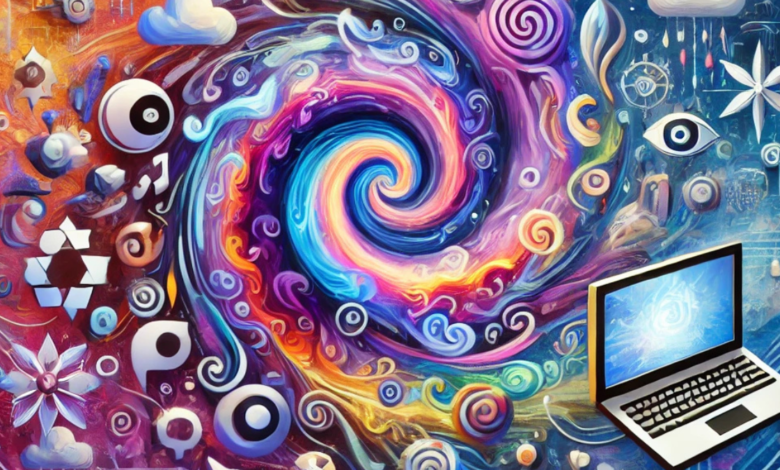Rule 34: Understanding the Internet’s Most Controversial Meme

Introduction to Rule 34
The internet is a fascinating and unpredictable place. Among its many quirks and subcultures lies Rule 34, an infamous concept that states: “If it exists, there is porn of it. No exceptions.” While the origins of Rule 34 might seem humorous and lighthearted, it reflects deeper aspects of internet culture, creativity, and the boundaries of expression.
Rule 34 is not just a statement; it’s a phenomenon. Over the years, it has morphed into a cultural marker for internet trends, discussions on digital freedom, and even the ethics of creative expression. To truly understand its implications, one must explore its origins, its impact on internet culture, and the debates it continues to spark.
The Origins of Rule 34
emerged in the early 2000s as part of a broader list of “rules of the internet.” These were humorous guidelines created by online communities to describe and satirize internet behavior. quickly gained traction because of its shock value and relatability.
- The Early Days of Internet Memes Memes in the early 2000s were vastly different from today. They were niche, often confined to forums and chatrooms like 4chan, Something Awful, and Reddit. Rule 34 first appeared in these spaces, where users jokingly applied it to various scenarios, from video games to children’s cartoons. Over time, it evolved from a joke into a widely recognized internet axiom.
- Mainstream Awareness By the mid-2000s, had entered mainstream internet culture. With the rise of platforms like DeviantArt and Tumblr, users began creating explicit fan art, often inspired by popular franchises. This inadvertently reinforced the validity of , as almost every popular topic seemed to have explicit content associated with it.
- Cultural Embedding’s notoriety grew as it began appearing in discussions, memes, and even academic analyses of internet behavior. It became a symbol of the internet’s unrestricted creativity—and its darker, unfiltered side.
The Creative Freedom of Rule 34
At its core, Rule 34 highlights the boundless creativity of internet users. While it might be easy to dismiss as crude or tasteless, it reflects how people reinterpret media and cultural phenomena in unconventional ways.
- Fan Art and Expression Fan art has always been a cornerstone of fandoms. often pushes this to extremes, where fans create explicit or humorous interpretations of beloved characters. While controversial, it underscores the lengths to which people will go to express their admiration for a franchise.
- Satirical Takes Rule 34 content isn’t always explicit for the sake of it. Many creators use the concept satirically, poking fun at societal norms or exaggerated fandom obsessions. This self-awareness often adds a layer of irony to the material, making it a unique form of digital humor.
- Blurring the Lines Between Art and Ethics raises interesting questions about what constitutes art and where ethical boundaries lie. While some argue that such content is a legitimate form of creative expression, others see it as problematic, particularly when it involves copyrighted characters or sensitive subjects.
Rule 34 and Internet Subcultures
The internet thrives on subcultures, and Rule 34 has found its place among them. Its influence extends beyond fan art, touching on broader aspects of digital communities.
- Fandom Dynamics Rule 34 often intersects with fandom culture, particularly in communities dedicated to anime, video games, and fantasy literature. These fandoms are known for their passionate and sometimes obsessive engagement with source material. becomes a lens through which fans explore their imaginations—albeit in an unconventional way.
- Online Communities and Platforms Platforms like 4chan, Reddit, and Tumblr have played significant roles in propagating Rule 34 content. These spaces allow users to share and discover niche material, further solidifying as a phenomenon.
- Subculture Evolution As internet subcultures evolve, so does . It has adapted to trends, incorporating new media forms like VR and AI-generated content. This adaptability ensures its continued relevance in digital spaces.
Ethical and Legal Implications
While R is often viewed as harmless fun, it raises important ethical and legal questions. The internet’s anonymity and freedom come with responsibilities, and R often tests these boundaries.
- Copyright Concerns Much of the content under involves copyrighted characters and intellectual property. This creates legal gray areas, as creators of explicit content rarely seek permission from the original IP holders. While some companies turn a blind eye, others actively pursue legal action.
- Moral Debates The moral implications of Rule 34 are hotly debated. Critics argue that it can trivialize serious topics or exploit vulnerable groups, while supporters see it as an exercise in free expression. The debate often reflects broader societal tensions around censorship and creative freedom.
- Impact on Original Creators Many original creators feel uncomfortable or even violated by Rule 34 content based on their work. This has sparked discussions about respecting artistic intent and the limits of fan-driven reinterpretation.
Rule 34 in the Age of AI and Technology
Advancements in technology have given Rule 34 a new dimension. AI, deep learning, and other innovations are reshaping how content is created and consumed.
- AI-Generated Content Tools like deepfake technology and AI art generators have made it easier than ever to create Rule 34 content. This raises concerns about consent, as real people can be depicted in ways they never approved.
- Virtual Reality VR technology has expanded the possibilities of Rule 34, creating immersive experiences that blur the line between fantasy and reality. While this opens new avenues for creativity, it also amplifies ethical dilemmas.
- Content Moderation Challenges Platforms now face unprecedented challenges in moderating Rule 34 content. As technology evolves, so do the methods for circumventing restrictions, making it a constant battle for content moderation teams.
The Psychological and Cultural Impact
Rule 34 is more than just a meme; it has a profound psychological and cultural impact on how people interact with media and each other.
- Normalization of Taboo Topics Rule 34 normalizes discussions around taboo topics, breaking down societal stigmas. While this can foster open dialogue, it also risks desensitizing people to sensitive issues.
- Community Building Despite its controversial nature, Rule 34 has brought people together in niche communities. These groups often bond over shared humor, interests, and the freedom to express themselves without judgment.
- Cultural Commentary Rule 34 serves as a form of cultural commentary, reflecting society’s shifting attitudes toward sex, censorship, and creativity. It challenges norms and encourages critical thinking about what is considered acceptable.
Conclusion: The Legacy of Rule 34
Rule 34 is a testament to the internet’s chaotic and unpredictable nature. While it may never escape its controversial reputation, it offers valuable insights into the dynamics of digital culture, creativity, and expression. As the internet continues to evolve, Rule 34 will remain a fascinating, if contentious, part of its history. Understanding it requires an open mind, a sense of humor, and a willingness to grapple with the complexities of human creativity.





